Newly named Office of Student Culture and Belonging
BY ADVAIT DANTULURI, STAFF WRITERRecent updates to biomedical engineering curriculum
The Department of Biomedical Engineering (BME) is changing its undergraduate curriculum, introducing new concentrations that allow students to narrow their focus of study within the field. Stevens has aimed to make the BME major the intersection between engineering and science, and guarantee a multidisciplinary education, allowing students to feel confident in working with teams of engineers from different fields. In an interview with the As-
sociate Chair of Undergraduate Studies for the BME Department, Professor Sally Shady, The Stute got the inside scoop regarding these recent changes and their expected effect on students.
In her position, Shady is in charge of maintaining the BME undergraduate curriculum’s alignment with current global health issues. In a world where technological advancement is constant, especially in the medical field, this can be quite a demanding task. Shady said that the recent curriculum developments are intended to address this dynamic en-
Stevens student Sara Deuidicibus publishes her first book: Ends on the Positive Ones
EVAN PAPAGEORGE, OPINION EDITORWhether it be a dream job achieved after meeting with company representatives at the career fair or taking a life-long project to new heights through a senior design project, Stevens offers many opportunities for students to take what they love further. Stevens fourth-year student and Stute member Sara Deuidicibus snatched up one such opportunity and published her book Ends on the Positive Ones. The Stute met with Deuidicibus to learn more about her journey into being a published author.
Deuidicibus has been writing poetry since she was just 11 years old. Since then, her passion has only grown — and so has the number of poems. This past summer, after much encouragement from those around her, Deuidicibus embarked on her journey to compile her poems. Entering the final year of her Stevens career, Deuidicibus realized that publishing might become more challenging as her schedule expands to a job, internship, or other commitments. With help from
NEWS (2-3)
Newly named Office of Student Culture and Belonging and Recent updates to biomedical engineering curriculum
FEATURE (4)
High school vs college
What are the differences, how can you succeed, and how to survive the transition.
her immediate family and professor Robin Hammerman, Deuidicibus learned how to format her poems into a book, copyright her work, and register with the Internal Revenue Service (IRS). In August 2023, she self-published her first book on Amazon.
Deuidicibus’ book includes seven unique sections, each with a theme, ranging from resiliency to self-perception and beyond. Within each section of the book, the tone of the poems gradually progresses from dark and sad to a more positive note in the end — hence the title, Ends on the Positive Ones.
Deuidicibus worked to ensure that the theme of her book is one of hope and empowerment. She shared with The Stute that when she was an infant, she was diagnosed with autism before entering kindergarten with a recovered autism diagnosis. Experts told her family that she would not talk — odds which Deuidicibus has not only overcome, but shattered. She explained that this publication signifies much more than the theme of the po-
SCIENCE (6) Super Blue Moon? Stevens’ SocialBot?
COVID ‘brain fog’? Learn more about what’s going on in the world of science.
PULSE (10)

Read answers from the Stevens community to our weekly Roving Reporter, plus solve our weekly puzzle and sudoku.

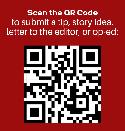
vironment.
As for what sparked the idea to make changes to the curriculum in the first place, Shady recalls that the BME department chair, Dr. Kang-Mieler, “wanted to redevelop the program to provide students with the opportunity to specialize and explore concentrations at a greater depth.” Shady also mentioned that students had asked for the inclusion of concentrations in the past.
Shady and Kang-Meiler had an idea, but the process to actually enact these changes took time. Shady
explains that overall there are two points of views that need addressing when creating these concentrations; regionally and nationally. She then remarks, “We then worked on leveraging our strengths and bringing some of our expertise to these significant areas in biomedical engineering.” Now that the idea for these changes were more concrete, it was time to share it to obtain feedback. Shady and her colleagues brought these changes to the entire biomedical engineering de-
SEE BIO PAGE 2
Stevens alumni office developing an LGBTQ+ post-graduate network
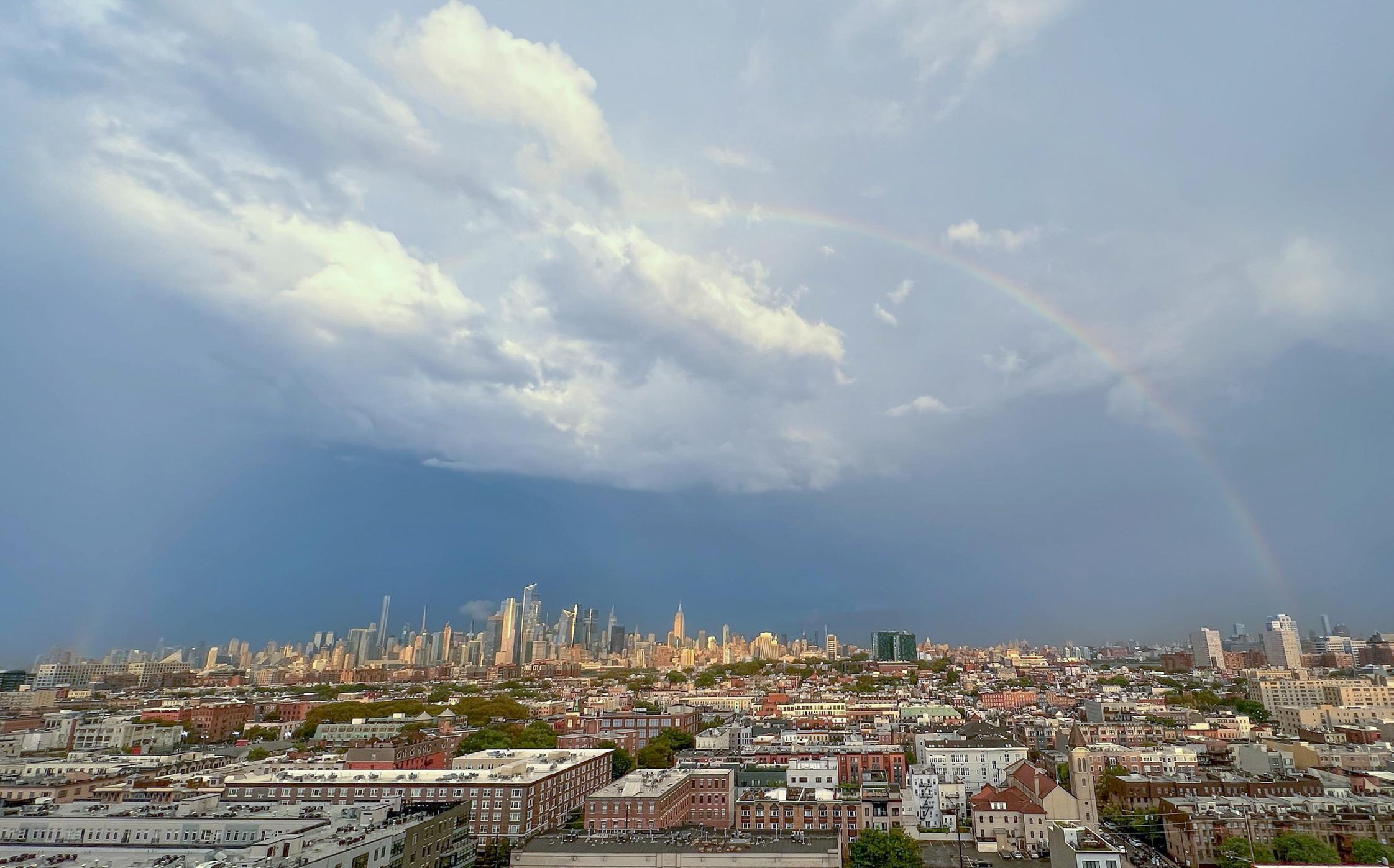
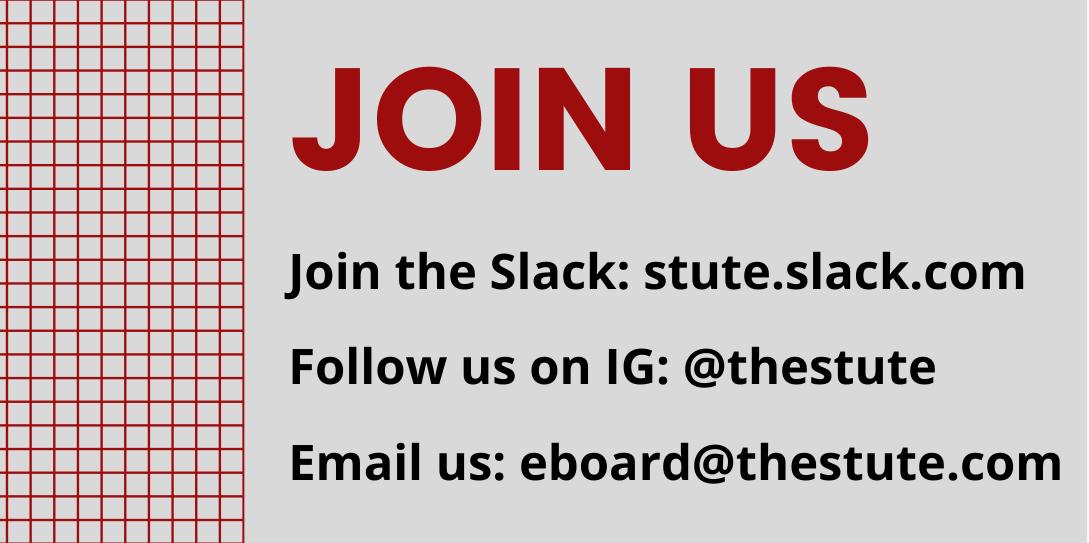 BY SHANE MITCHELL, CONTRIBUTOR
BY SHANE MITCHELL, CONTRIBUTOR
As of last May, the Class of 2023 joined a growing network of over 50,000 Stevens alumni nationwide. With significant geological and characteristic diversity amongst alumni, it’s crucial that Stevens graduates have opportunities to connect with each other and grow their respective professional networks. In an effort to help facilitate these connections, the Division of Development and Alumni Engagement has begun to develop an LGBTQ+ Alumni Network, which aims to help support former Stevens students who identify as members of the LGBTQ+ community.
While still in its infancy, the LGBTQ+ Alumni Network has recently begun to take shape on campus. Assistant Director of Alumni Engagement, Annie McGuinness, has been a driving force in the implementation of this program. She described the initiative as an “identity-based affinity space within [the] Stevens alumni community.” The purpose of this space is to focus on providing resources so “alumni can find a connection between who
The Office of Diversity and Inclusion, created to provide resources and support students from underrepresented groups and diverse backgrounds, has recently been renamed the Office of Student Culture and Belonging. According to a LinkedIn post by the office’s director, Lilliana Delman, this change was done in order to better represent and showcase the office’s commitment to creating an inclusive community and to strengthen a student’s sense of belonging on our campus regardless of their culture or upbringing. The renaming is also intended to showcase how specific they are in the complex and intersectional work being done to ensure a more inclusive and welcoming campus.
Ms. Delman quotes Dr. Terell Strayhorn, a prominent diversity academic, who defines student belonging as “students’ perceived social support on campus, feeling or sensation of connectedness, the experience of mattering or feeling cared about, accepted, respected, valued by and important to the group (e.g., campus community) or others on campus (e.g., faculty, peers).” The office
believes that cultivating a sense of “belonging” is critical to each student living on campus to make it a safe environment to learn, play, discover, and enjoy. Delman said that striving to make a more inclusive campus is important because it affects how students perceive themselves and others and opens doors to learning about different perspectives that could be helpful.
The office intends to continue its mission in aiding all students from under-resourced and underrepresented backgrounds and provide ongoing training and consultation for the Stevens community. It intends to focus on five key objectives to create an inclusive campus: identity development (creating opportunities to help students learn about social identities, socio-historical context, intersections with others, and personal meaning), social justice education (fostering cultural consciousness through ongoing learning about systems of power, identities, and innovative practices for inclusion and equity), community-building (connecting intracultural and intercultural communities through dialogues, multicultural celebrations, networking, and civic en-
SEE SCB PAGE 2
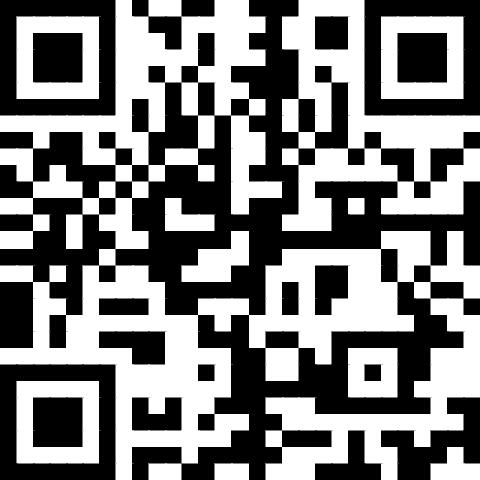
Professor Goodman chosen for MOST program to teach
they are and their alma mater.” With the Stevens alumni community growing in size year after year, smaller groups like this one will facilitate personal interactions and ensure every member of the Stevens community feels welcome.
As a key individual in the creation of this program, McGuinness has been responsible for structuring the initiative in a sustainable way. She has worked closely with Liliana Delman, the Director of Student Culture and Belonging, to support LGBTQ+ students not only on campus, but also throughout their journey “as they grow in their personal and professional lives.” This program is meant to be a lifelong resource for Stevens graduates, having been described as both a “safe space” and an opportunity to “connect in ways that [are] important to the LBGTQ+ community.”
Even though the network is still in its initial stages, a number of alumni have already pledged their support for the idea, with a focus group having been created in July of 2023 to gather opinions and ideas
Here at Stevens, meeting someone who works hard to do what they love is nothing unusual. In particular, the many professors of the four schools of Stevens offer their students an intimate view of their experiences, knowledge, and skills. Stevens’ faculty’s love of teaching took center stage when Teaching Assistant Professor Sarah Goodman of the Chemical Engineering and Material Science department was selected to participate in the Math Outreach Seminar and Training (MOST) program at the National Museum of Mathematics (MoMath) as part of MoMath’s effort to spread STEM opportunities through math. The Stute met with Professor Goodman to learn more.
Professor Sarah Goodman attended Rutgers University, studying chemical engineering, before going to Massachusetts Institute of Technology (MIT) for her Ph.D. in material science and engineering of electron microcity and structure, the engineering of making better light emitting diodes (LEDs). While at MIT, Goodman spent a lot of time teaching and interning at an
educational not-for-profit organization. She then went into teaching K-12 students in New York City before coming to Stevens in 2021.
During the 2021-2022 school year, Goodman volunteered at MoMath, guiding guests and interpreting the museum exhibits. Her love of math, science, and teaching led to her selection for the MOST program. The MOST program selects 10 female math and other related field teachers for a summer program to help develop presentations focused on teaching anyone a complex topic with only the mathematical knowledge of someone with middle school experience.
The program included communication skills, presentation creation, and improvisation classes to help improve participants’ ability to answer questions and convey their topics more clearly. The goal of the preparation was for the teachers to give an engaging and meaningful talk to people of all backgrounds but still be able to understand the topics. Goodman’s presentation focused on the structure of materials and using diffraction to uncover
the love of math
EVAN PAPAGEORGE, OPINION EDITOR
Masthead Volume CXX No. 2
Executive Board
EDITOR-IN-CHIEF......................................ISABELLA ZIV ‘25
BUSINESS MANAGER............................TANYA AVADIA ‘26
MANAGING EDITOR.......................................AVA WANG ‘25
LAYOUT EDITOR................................NICOLE GIARDINO ‘25
OUTREACH CHAIR KAYDEN CANNILLA ‘24
DIGITAL MANAGER................................RAFAEL LEE LI ‘24
SECRETARY CLAIRE HANNAN ‘24
HEAD COPY EDITOR KEENAN YATES ‘24
Three suspects arrested on weapon charges
RAYNELIS VILLA, CONTRIBUTOR
NEWS EDITOR.........................................BEN KNOBLOCH ‘25
SCIENCE EDITOR.........................................ERIN MCGEE ‘25
OPINION EDITOR............................EVAN PAPAGEORGE ‘26
SPORTS EDITOR........................................CHRISTA RUIZ ‘25
FEATURES EDITOR................................TASHA KHOSLA ‘25
PULSE EDITOR........................................MIA PETROLINO ‘25
Editorial Board Operations Board
HEAD PHOTOGRAPHER......................OLOF PERSSON ‘25
ARCHIVES LIAISON.......................KEVIN CASTNER JR. ‘24
Staff & Contributors
Advait Dantuluri
Raynelis Villa
Shane Mitchell
Emma Spoonaur
Arther Serra
Meghana Mamadapur
Jeylan Jubran
Justin Lema
Tianna Spitz
Riyana Phadke
Ruthie Mullisky
Abby Jacobs
Nicole Cheung
Ethan Kleschinsky
Hima Thummala
Josie Strano
Stephen Pachucki
Umang Chulani
Contact Us
Corrections
All instances of “Madison Gosler” in the 9/8/23 article about dining awards should be “Madison Goslin”
Disclaimer
All opinions and editorials reflect the views of their respective author(s). No Part of The Stute may be reproduced in any form, in whole or in part, without the written consent of the Editor-in-Chief. Cited references of The Stute are permitted.
Policy on Letters to the Editor
All members of the Stevens community are able to submit a Letter to the Editor to be published in The Stute. Letters must refer either to a piece published in The Stute or to The Stute in general and must be between 400 – 800 words in length. Submit letters to editor@thestute.com with your name and title (when applicable) or using our Google form. For writers who wish to write a Letter to the Editor anonymously, please see our policy on anonymity.
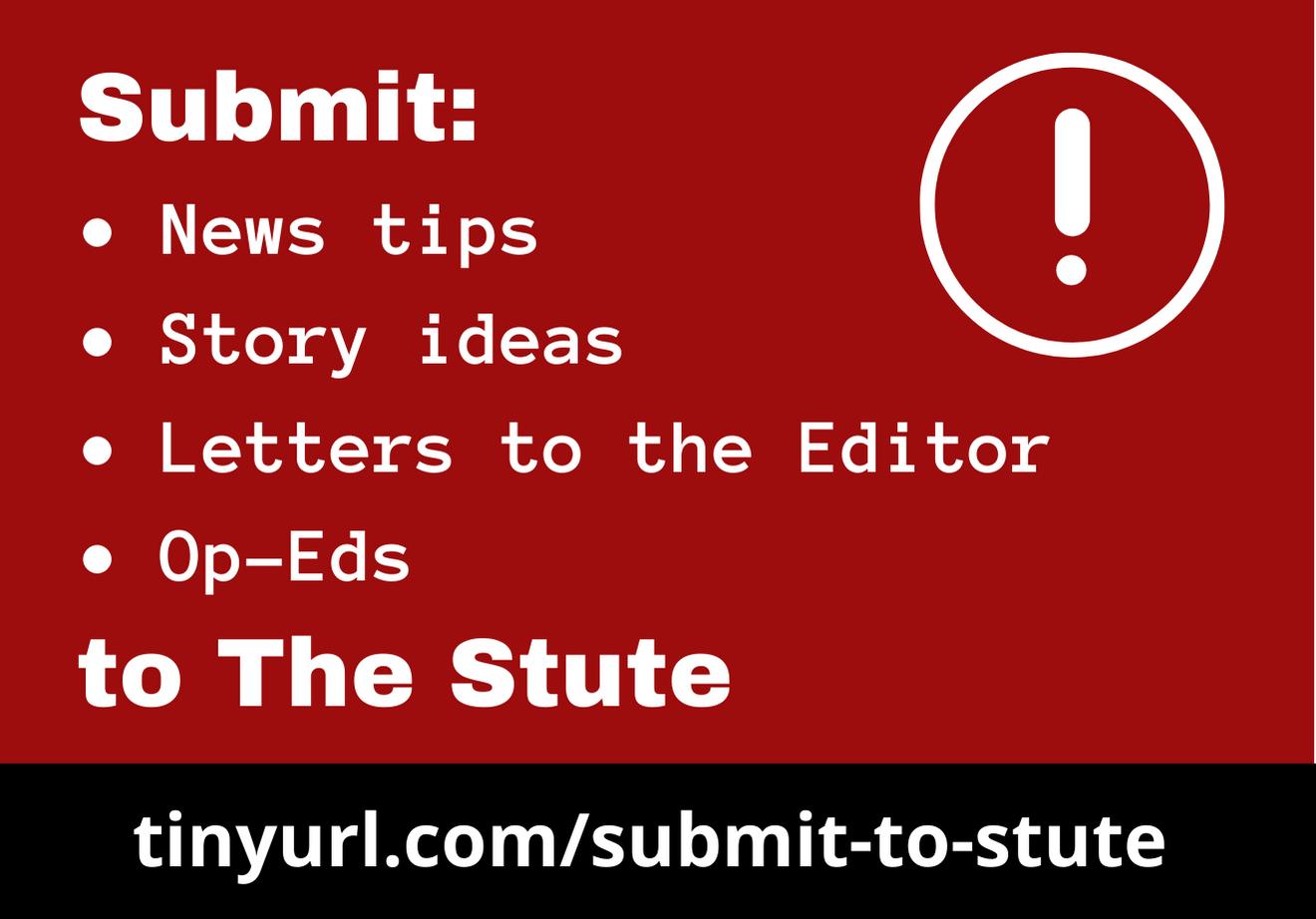
The Editorial Board reserves the right to choose whether or not to publish a submitted Letter to the Editor based on a majority rule vote, and additionally reserves the right to edit letters for clarity or request authors to revise. Provided that the author approves the final version, The Stute reserves the right to edit letters according to our copy editing procedures, defined in our policies.
Policy on Op-Eds
All members of the Stevens community are able to submit a standalone opinion piece (otherwise known as an Op-Ed) to be published in The Stute. Op-Eds must be between 400 – 800 words, but longer submissions will be considered on a case-by-case basis. To submit an OpEd please email eboard@thestute.com with your name and title (when applicable) or using our Google form (tinyurl.com/submit-t0-stute). For writers who wish to write an Op-Ed anonymously, please see our policy on anonymity.
The Editorial Board reserves the right to choose whether or not to publish a submitted Op-Ed based on a majority rule vote, and additionally reserves the right to edit Op-Eds for clarity or request authors to revise. Provided that the author approves the final version, The Stute reserves the right to edit Op-Eds according to our copy editing procedures, defined in our policies.
On Wednesday last week, the Hoboken Police had an immediate press release informing on the arrest of three armed suspects. The police received a report of a man with a firearm and a woman with a knife at 5 p.m. between 4th and Harrison Street. The officers who handled the situation were Det. Sgt. William Collins, Sgt. Francis McCourt, Sgt. Edward Sellick, and Police Officers Anthony Azzoline, Christopher Barral, Jason Montalvo, Rose Kanan, Ramon Estrella, Ricky Truppner, and Marc Lombardi.
At the scene, the man, who was identified as 26-year-old Herbie
BIO
CONTINUED FROM PAGE 1
partment and its faculty. Once they addressed that group’s concerns and came up with a finalized curriculum modification, they took it to the Undergraduate Curriculum
SCB CONTINUED FROM PAGE 1
gagement), empowerment (Support underrepresented students in developing the cultural capital (awareness of resources, access to knowledge, mentoring opportunities), sense of belonging, and validation needed to thrive at Stevens and beyond) and allyship (cultivating a community of allies through expanding awareness of
SARA
CONTINUED FROM PAGE 1
ems. Deuidicibus hopes her book gives parents hope that their kids will succeed in whatever they want and that their “kids’ voices will be heard.”
The Stute asked Deuidicibus if she had any advice for anyone looking to publish their own book. Her response could fit right in with her Ends on the Positive Ones poems: “If you have a vision, you can
LGBTQ
CONTINUED FROM PAGE 1
from former Stevens students. The Division of Development and Alumni Engagement is actively working with this focus group to develop a mission statement and goals for the next year, both of which will likely be formative decisions in shaping the future of this initiative. McGuinness has
MOST
CONTINUED FROM PAGE 1
the molecular and atomic structures of matter that make up everyday life. When asked, Goodman explained that her topic allows for connections between a complex mathematical subject and its practices — diffraction, and tangible things like the everyday matter everyone interacts with daily.
The Stute asked Goodman what she hopes people can take away from the MOST program and her presentation. She explained that as a child, she never really liked math and often struggled with
Spann, had been putting the firearm in his bag until he was ordered by the police to stop and show his hands. He possessed a .43 caliber Gen 5 Glock 17 spring loaded pistol, which is often loaded with paintballs or rubber balls. Additionally, Spann was searched and was found with an 8-inch pocket knife. At the Hoboken Police Headquarters, Spann was charged with possession of a firearm, possession of an air pistol, and possession of other weapons. He was found to have had a warrant out of Wantage Township and was transported to the Hudson County Correctional Facility.
Meanwhile, 45-year-old Farra Mongon was found disorderly, shoving a woman who was trying
Committee. The committee reviewed the proposal and voted on its approval. Since the plans were approved, Shady seemed happy with the results, commenting that “the process went very well.”
As a result of these successful changes, the BME department will be introducing the following concentrations this academic year:
inequities, developing empathy and engaging in collaborative action). The office also oversees the Intercultural Space, the Lore-El Center for Women’s Leadership, and Veterans Affairs. It also provides resources for LGBTQ+ students on campus.
The renaming to the current Office of Student Culture and Belonging is very important as it showcases the changes that Stevens is making to create a diverse, inclusive, open-minded campus that will allow students to cele-
do it.” She explained that it took her ten years to get to the point of publishing. Deuidicibus encourages anyone who writes that your regimen can be 30 minutes every day or long breaks of no writing and still possible to publish if you are genuinely motivated. She insisted it is better to have tried and failed than to look back and wonder: What if? Deuidicibus’ journey to becoming a published author is a testament to her journey and the opportunities that Stevens offers its students to pursue their passions
shared that creating a calendar of events and establishing a network membership expansion program are two of the key objectives to be discussed in upcoming meetings, both of which will increase knowledge of the program amongst Stevens graduates. While the creation of a network like this one will likely take time, support for the idea has already been overwhelming. McGuinness shared that “alumni are eager and dedicated to creating a net-
math in school. It was not until 11th grade, Goodman explained, that math started to make sense, and her love for math began. She emphasized that math may only become interesting for someone after graduating high school, which is often too late for some students. Her goal is to change the stigma that if you are not good at math, you should not like math. She says that, as MOST is trying to do, it is possible to introduce more exciting topics and applications earlier in math curriculums and explain how basic, sometimes boring subjects like arithmetic are essential and connected to the rest of the world: “Reverse the ‘I suck at math’ mojo,” she emphasized.
to fight her. Following the search after Mongon’s arrest, an 8.25inch pocket knife was found on her. Mongon was charged with aggravated assault, unlawful possession of a weapon, possession of a weapon for unlawful purposes, and disorderly conduct. Additionally, the woman that had been in an altercation with Mongon was later found and arrested on the 500 block of Marshall Drive. She was identified as 45-yearold Charlene Feliciano. Feliciano was charged with possession of a weapon for unlawful purposes, possession of other weapons, and terroristic threats. Both women were taken to the Hoboken Police Headquarters where they were released with a summons.
Biomaterials and Tissue Engineering, Biomechanical Rehabilitation and Neuroengineering, and Biomedical Imaging.
In closing, Shady urges anyone who wants to learn more about these areas in biomedical engineering to reach out to her at sshady@stevens.edu or anyone else in her department.
brate their belonging and learn about different points of view. Though various prejudices still exist on Stevens campus, being open to learning is a good way to decrease those prejudices and reduce their effects on the people around us. It is important that we all make the effort to learn about and celebrate different cultures and backgrounds and make efforts to decrease preexisting notions and biases. From there, we can ensure that Stevens can be a friendly and inclusive community for everyone.
and turn them into something more. Her book, Ends on the Positive Ones, not only showcases her talent as a poet but also serves as an inspiration to others to follow their dreams. Deuidicibus’ message of hope and empowerment is a reminder that anything is possible with hard work and determination. Her advice to aspiring authors to have a vision and go for it is a valuable lesson that applies to all aspects of life. We congratulate Sara Deuidicibus on her momentous achievement and wish her the best in her future endeavors.
work where [LGBTQ+ students] feel supported and heard” while simultaneously aiming to create “fun experiences [that] foster a feeling of belonging at Stevens.” With the support of both students and administration, the Stevens LGBTQ+ Alumni Network will hopefully grow into a positive environment where students, both former and current, can connect based on shared experiences and come together to develop a stronger sense of community.
Professor Goodman’s selection for the MOST program is a testament to her dedication to teaching and spreading her love of math. Her passion has allowed her to deliver an engaging and meaningful presentation on the structure of materials and their connection to everyday life. By changing the stigma associated with math and introducing exciting topics and applications earlier in math curriculums, Goodman hopes to inspire more students to discover their love for math and pursue careers in STEM fields. We applaud her efforts and look forward to seeing the positive impact she will continue to make in the Stevens community and beyond.
United Auto Workers go on the offensive
BY ARTHUR SERRA, CONTRIBUTORLabor unions were, for most of their early history, about keeping businesses in check. In a kind of equilibrium, businesses grew the economy while unions made sure that it didn’t come at the expense of workers not being able to eat. However, starting in the 1950s, unions started to lose members. In the early 1950s over 32% of American workers were unionized, in 2022 it was 10.1%.
Some analysts say that one of the biggest causes for this was that union leadership became corrupt. Union leaders became more focused on staying in power, and growing that power than actually fighting for their members’ lives. This dynamic was disrupted last March in Detroit when the United Auto Workers Union (UAW) voted into power Shawn Fain, the first non-leadership insider to be elected President of the UAW in over 70 years.
Shawn Fain has in the first few months of being in power reinvigorated the UAW’s militancy when negotiating for its constituents, changed how it decided who to support politically, and has been far more open with how the union works.
The first prominent change made by Fain was not endorsing President Biden for the 2024 election. Previously, the endorsement of the Democratic nominee would have been all but assured. This year the UAW, under Fain’s leadership, says it wants more than platitudes of being pro-union from their choice of president. Concerns over job security as the auto industry shifts away from gas cars and begins to build more electric vehicles must be answered if the “most pro-union president… in American history” wants to receive a UAW endorsement.
Although this change is significant, it pales in comparison to how aggressive the UAW has become in its negotiating tactics with the Big Three—Ford, General Motors, and Stellantris. Previously, the UAW would negotiate with one of the 3, and use that deal as a basis to settle with the others. This tactic has historically not netted the UAW, and most unions, significant gains. Therefore, it makes sense that Fain from start to finish completely changed how the union compromises with its opponents.
Firstly, Fain decided to open negotiations with all three companies simultaneously, which not only shows business to the Big Three’s executive teams but also motivates government officials to get involved to avert a strike that will start at midnight, on September 15. Furthermore, in a break of tradition, Fain did not extend the customary handshake to executives at the beginning of the negotiation process, stating: “I’ll shake hands with the CEOs when they come to the table with a deal that reflects the needs of the workers who make this industry run.” Finally, the demands for the new deal are historic in scope: A 46% pay raise over the next 4 years, a 32hour work week with 40 hours of pay, and a restoration of traditional pensions — something that workers hired after 2007 lack.
Fain has called the demands audacious, and has shown a willingness to be flexible, but has so far tossed proposals sent to the union into trash cans and remains aggressive. However, even if the UAW doesn’t get all of its demands fulfilled, the willingness to go on the offensive follows the recent trend of unions becoming more ambitious, and starting to reclaim their former power in the American workplace.
Former President Donald J. Trump’s indictment and arrest summary
BY UMANG CHULANI, CONTRIBUTORFormer US President Donald J. Trump has garnered significant notoriety due to his history of engaging in surreptitious activities, particularly related to his alleged efforts to overturn the 2020 presidential election. On August 14, Trump was indicted by an Atlanta-based jury and subsequently turned himself in on August 24, facing four counts of criminal charges encompassing conspiracy to obstruct an official proceeding and conspiracy to defraud the United States. Throughout this period, the prominent politician and business tycoon has been trying to leverage such public scrutiny in order to gain more attention for the upcoming 2024 presidential election. After turning himself in at Fulton County Jail in Georgia, it’s worth noting that this case not only implicates the former US President but also includes the alleged involvement of six co-conspirators, whose identities have yet to be officially disclosed.
Being the fourth criminal case involving the former president, these charges arise from an investigation led by Fani Willis, the District Attorney of Fulton County. Prosecutors delving into Trump’s alleged involvement in overturning the 2020 Presidential Election have collected a wealth of evidence, including text messages, video footage, and various other forms of communication exchanged between Trump and Brad Raffensperger, Georgia’s Secretary of State. The case brought towards President Trump encompasses not only his alleged efforts to overthrow the 2020 election but also allegations of intimidation and the undermining of the votes of numerous American citizens. The specific criminal charges included in this indictment are as follows:
• One Count: Conspiracy To Obstruct An Official Proceeding
(January 6 Congressional Proceeding)
• One Count: Obstruction of and the attempted obstruction of an official proceeding
• One Count: Conspiracy Against the Right To Vote and To Account for the Votes
• One Count: Conspiracy To Defraud the United States of America through fraud and deceit to obstruct the federal government from proceeding with the presidential election
Trump, after acknowledging having lost the 2020 presidential election, took it upon himself to appoint several of the co-conspirators to challenge the results and leverage his position to remain in power. Prosecutors say that Trump leveraged false accusations of election fraud in order to get state officials to overturn the votes to his (Trump’s) favor. Additionally, prosecutors say he abused the power of the Justice Department to execute false investigations targeting certain states and leveraged the Justice Department to present fraudulent electors compared to legitimate US citizens, then incited an unlawful and violent riot at Capitol Hill after being told that the efforts to overturn the election were unsuccessful, with supporters of Trump believing former Vice President Mike Pence was responsible for the loss.
Trump pleaded “not guilty” on August 31 and waived the right to appear in court in Georgia. After surrendering on August 24, video footage (taken by CNN) shows Trump’s Boeing 757 taking off from Hartsfield-Jackson International Airport to return to Newark, New Jersey. This not only signifies the inaugural instance of a former US President facing four indictments but also leaves many wondering whether this signals the conclusion of Trump’s illegal entanglements or if there are yet more chapters to unfold in the saga of the former 45th president.
A brief recap of the first GOP presidential debate
BY SHANE MITCHELL, CONTRIBUTORWith the 2024 presidential election just over a year away, prominent Republican politicians have begun expressing their opinions on hot-topic issues as they prepare to face off against likely Democratic nominee, President Joe Biden.
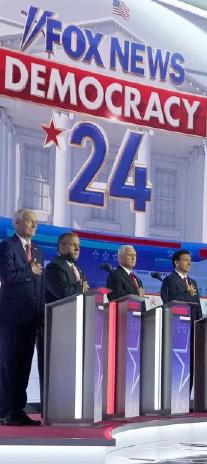
According to aggregate poll data from FiveThirtyEight, a widely cited political analysis outlet, former President Donald Trump maintains a strong lead amongst Republican voters. Despite his success in the polls, former President Trump opted not to attend this debate, although eight of his competitors did. The participants of the first debate included, in descending poll order, Ron DeSantis, Vivek Ramaswamy, Mike Pence, Nikki Haley, Chris Christie, Tim Scott, Asa Hutchinson, and Doug Burgum.

The debate began with a question about President Biden’s economic plan, dubbed “Bidenomics,” a term that the President himself has embraced. All candidates agreed that government spending should be cut, with some berating their competitors for allegedly overspending over the course of their political careers. Vivek Ramaswamy leaned into his profile as a “political outsider,” much like former President Trump did in the debates leading up to the 2016 election. While accusations were being made among candidates, Nikki Haley used her time to share examples of spending packages that were approved by Republicans in Congress, which she believed to be excessive. Haley then proceeded to call attention to her education and experience in handling financial matters,
ending her time by saying “it’s time for an accountant in the White House.”
As the economic discussion continued, Ramaswamy expressed his support for non-renewable energy sources, saying he would “unlock American energy” by “drilling, fracking, burning coal, and embracing nuclear.” He reaffirmed this stance later in the debate, claiming that “the climate change agenda is a hoax,” which was met with a mixed reaction from the audience. The debate on economic policy ended with points from Ron DeSantis and Asa Hutchinson, where DeSantis touted his lax regulations during Covid as a positive for the Floridian economy and Hutchinson referenced past decisions he had made as governor of Arkansas to shrink the size of government and reduce taxes for residents.
On the topic of climate change, most candidates acknowledged human activity as a driving force of global warming, yet many believe the issue should be dealt with abroad instead of domestically. Haley blamed overseas manufacturing as the root cause of climate change, saying we should “start telling India and China that they need to lower their emissions.” She then continued on to express her distaste for President Biden’s “green subsidies,” as she claimed, “half of the batteries for electric vehicles are made in China.” Haley’s claim is supported by evidence from both the Department of Energy and Statista, which shows that roughly seventy-nine percent of lithium-ion batteries are produced in China. Other candidates shared similar beliefs, with Tim Scott advocating for creating more domestic manufacturing jobs and reducing
American reliance on manufacturing in China.
Following the debate on climate change, the moderators prompted each candidate to share their stances on abortion. All candidates expressed that they were pro-life, with Haley taking a more moderate approach and arguing that a federal ban would require concessions. DeSantis based his argument on his morals, saying he “believes in a culture of life,” but refused to commit to a sixweek federal abortion ban. Mike Pence categorized abortion as a “moral issue” as well, and implied that he would support a fifteen-week abortion ban at the national level. Doug Burgum firmly stated that “we should not have a federal abortion ban,” citing the Tenth Amendment as evidence and arguing that abortion law should be delegated to the states and the people within them.

As the debate continued, conversation switched to a discussion on crime and economic decline in cities. Nearly all candidates believed that Democratic policies were to blame, and nearly all vowed to create topdown reform centered largely around increased police funding and a crackdown on violent crime. The moderators then asked which of the candidates would support Donald Trump if he was convicted of any of the ninety-one counts he is being charged with. In response, all candidates besides two agreed they would support him, with Chris Christie being the most outspoken in his opposition.
Christie also praised Pence for his certification of the 2020 election results, expressing his belief that Pence put the Constitution before personal political gain.
Next, candidates discussed Congressional funding given to Ukraine. Ramaswamy stood firmly by his opinion that the United States should stop funding Ukraine’s defensive forces, while Haley opposed his views and garnered massive applause for claiming that Ukraine’s fight against Russia was a fight against American opposition as a whole. DeSantis expressed his intent to divert Ukrainian funding towards defending America’s southern border, vowing to take swift action against drug traffickers and claiming that he would “leave them stone-cold dead.”
Nearing the end of the debate, candidates discussed educational practices and the Department of Education. DeSantis boasted about his decisions to eliminate critical race theory, remove gender theory, and bolster civic education in Florida’s K-12 curriculum. Ramaswamy stressed the need to eliminate the Department of Education and advocated for disbanding teachers’ unions, promoting school choice, and requiring that students pass a mandatory civics test to graduate. Burgum expressed his belief that a lack of innovation is the primary flaw with America’s public education system and stated that education is not one-size-fits-all. Haley shared many of the same policies as other candidates, but she also highlighted the importance of reading comprehension and vocational courses, saying “let’s teach our kids to build things again.”
As the debate ended, candidates delivered their closing statements. Burgum referenced his upbringing in a small town, promising to improve the economy and reduce government
regulation. Hutchinson centered his remarks around law and order, stating that he would improve national security along the southern border and “bring out the best of America in terms of our national character, our faith, and our hope for the future.” Scott shared that he was once a “disillusioned young man growing up in a single-parent household mired in poverty,” then discussed what the “American Dream” means to him. Christie focused on his gubernatorial victory in New Jersey, claiming that his ability to beat an incumbent Democrat at the state level was proof he could beat Joe Biden in the presidential election. Haley described her husband’s service in the military and vowed to provide protection domestically just as her husband provided protection abroad. She then reiterated the core components of her campaign, mainly improving the economy and bolstering national security. Pence discussed his intention to roll back many Biden-era policies and called attention to his experience in national politics. Ramaswamy listed his ideals in rapid succession, saying “God is real, there are two genders, fossil fuels are a requirement for human prosperity… capitalism lifts us up from poverty… and the US Constitution [is] the strongest guarantor of freedom in human history.” Lastly, DeSantis referenced his many personal attributes, including that he is a “blue-collar kid,” a veteran, a dad, and a husband. He ended by citing his decisions as governor of Florida, using them as proof that Republican ideals can be implemented effectively. With that, the first GOP presidential debate of this election cycle concluded.
TRANSITIONING INTO COLLEGE
Is this high school 2.0?
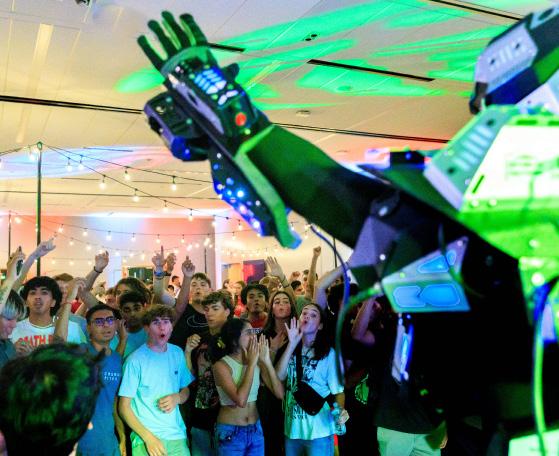 BY JUSTIN LEMA, OPINION COLUMNIST
BY JUSTIN LEMA, OPINION COLUMNIST
Imagine you could go back in time to talk with yourself from high school. What would you tell your younger self about college from your current experiences? I am sure one thing you may mention is the abundant amount of free time there is in college. Our schedules may look different, but one thing that we all have in common is less class time on our dayto-day schedule. We no longer must follow the strict high school schedules that we were given but instead we are graciously given the opportunity to choose our own schedules as incoming freshmen. One thing that distinctly separates high school from college is the flexibility students have on campus. With this new freedom and flexibility comes great benefits and some challenges. One of the benefits is that we have more time to ourselves as students to explore campus, join clubs, and advance in our career. However, with much more time on our hands, it can be difficult to expertly manage our time, which is one of the reasons many students find the transition between high school and college challenging. As we become more independent it is important to develop our time management skills, and college is the perfect place to nurture that.
What else can you tell your
younger self about the opportunities at college? One thing that is more apparent is the higher access to research possibilities. In comparison to an average high school education, where you would have to look for external opportunities and, in most cases, students are not given enough guidance during the process. Here at Stevens, you will be exposed to research in your Writing and Communications Colloquium class during the first two terms. Not only can you research in your own time, but you can make the most of resources such as the Writing and Communications Center and the Research Desk in our Samuel C. Williams Library. If you do not have experience with research papers, then college will be a great starting place as you can connect with professors about opportunities. A sheet produced by Macalester College from Minnesota organizes many key differences between high school and college. One of these differences is identifying and citing sources for college papers in contrast to high school essays. The sheet states that “you will want to develop a personal reference library to facilitate on-going research interests.” What this essentially means is that it is important to research the latest findings and sources that match your career path. Being able to find these research opportunities, whether it be through
an external program or by asking your professor, will help your future growth. Future employers will be able to marvel at your experience in your career path, especially when they see your time management with schoolwork and external research.
Lastly, this leads us into employment opportunities and workload on campus. With greater independence it is crucial to equally balance jobs with studies. This also relates to the amount of free time that we have in our schedules, because many of us have one hour plus gaps in our schedules. In these gaps we may choose to study in the library or to work a part-time job to cover any costs that we may need to cover. Not only are part-time jobs the only employment opportunities, but with the Co-Op program offered at Stevens for selecting degree programs, internship opportunities are more abundant with great companies. In addition to the current five-year Co-Op program, there are Networking Nights that will be setup on campus to bring recruiters to us Steven’s students.
As you have read this article, I am sure that you have begun to realize the number of opportunities and freedoms that college offers in contrast to high school. There is no doubt that we will be able to take advantage of this and make the most of our college career at Stevens.
Finding the right key to dorm success: unlocking communication and comfort at Stevens

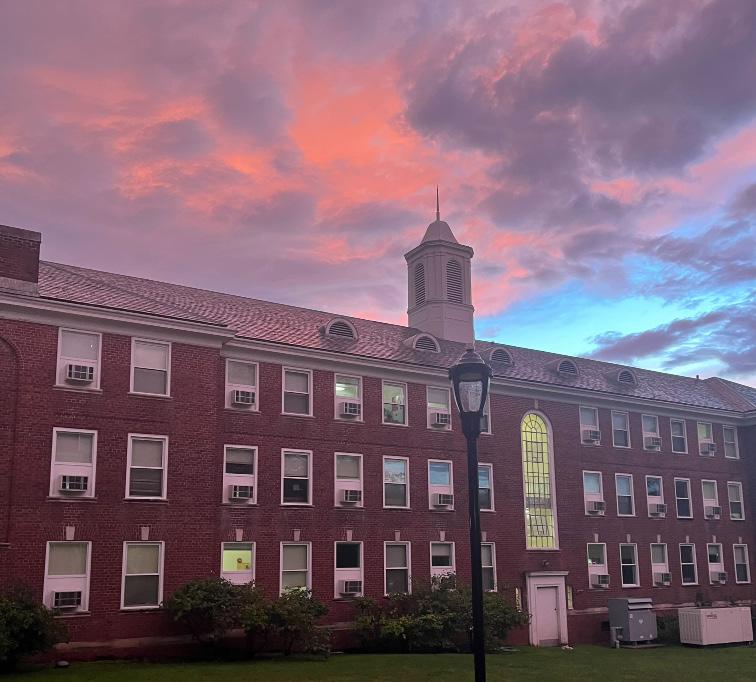
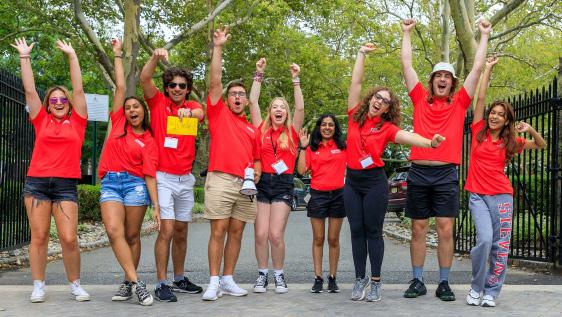
 BY JEYLAN JUBRAN, CONTRIBUTOR
BY JEYLAN JUBRAN, CONTRIBUTOR
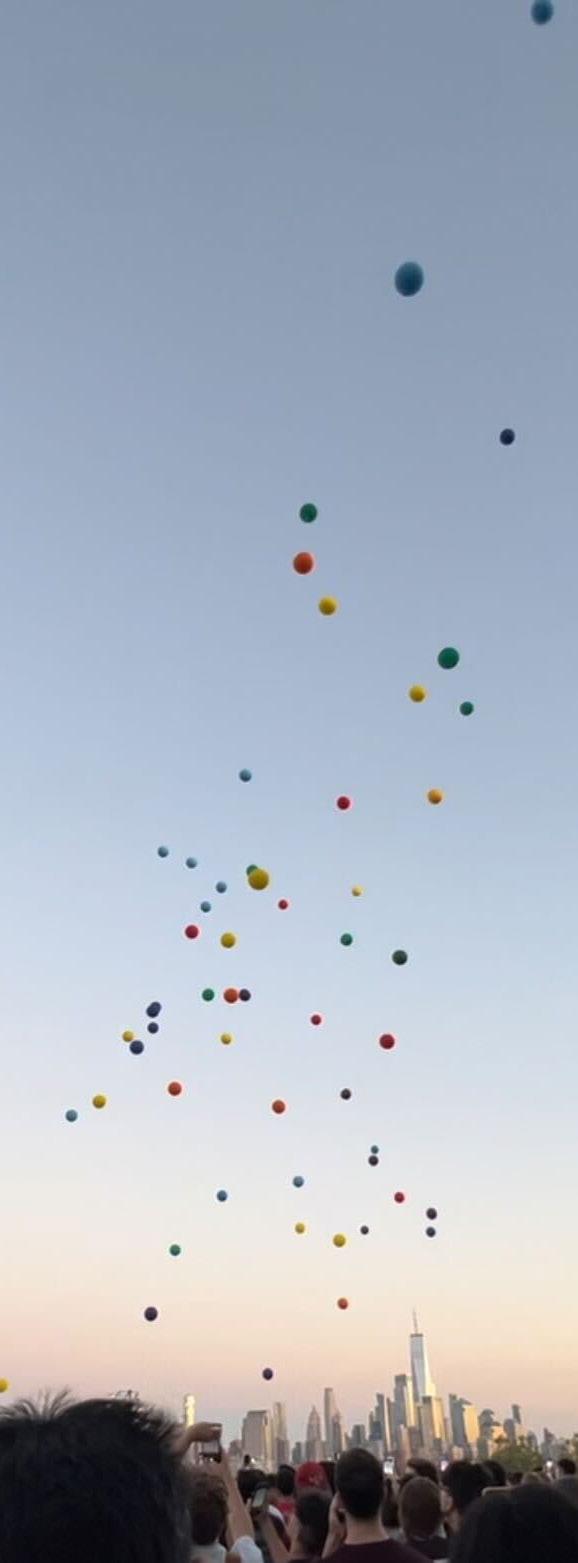
In the dynamic world of dorm life at Stevens, remember that your keys to success extend beyond the physical key to your room. Yes, your dorm key is essential, and if ever locked out, don’t hesitate to call the correct number for your residence’s RA on duty (201)-216-3777 for assistance. But perhaps the most vital key is communication.
Living with a roommate can be a unique experience, where diverse personalities, opinions, and even cleanliness standards can sometimes clash. However, the solution to these challenges is straightforward: communicate openly with your roommate.
A nationwide survey revealed that over half of women (50.1%)
and a significant portion of men (44.1%) face frequent roommate issues. Shockingly, 5.6% of students admitted that these difficulties negatively impacted their academic performance.
What’s more, most surveyed students believe their problems could have been easily resolved through a simple conversation. So, don’t shy away from talking to your roommate. No matter how awkward, daunting, or uncomfortable it may seem, communication is the key to making your semester significantly easier. At Stevens, we understand the importance of fostering these conversations, and that’s why we offer the Roompact agreement.
Roompact provides a structured way to address challenging topics such as differing opinions, per -
sonal hygiene, room preferences, and personality traits. It helps set clear boundaries between roommates and serves as a useful reference when conflicts do arise. Another valuable resource in your dorm life journey is your Resident Assistant (RA). RAs are here to be your best friends in your shared living environment. They create a positive and supportive atmosphere through door decorations, floor activities, meetings, and more. If you ever need assistance, don’t hesitate to reach out. You can usually find your RA by simply knocking on their door or emailing them, as their information is readily available on their bulletin boards. However, if the situation calls for more professional assistance, Stevens CAPS is always close by. Our Counseling and Psycholog-
ical Services (CAPS) provide a safe space for you to escape when having a roommate becomes overwhelming, or you simply need someone to talk to. Located next to North Building, you can visit CAPS between 9 a.m. and 8 p.m. on weekdays or from 9 a.m. to 5 p.m. on weekends. All students are encouraged to drop by or schedule an appointment through the Stevens Health portal.
But escape isn’t limited to CAPS alone — various quiet spaces can be found throughout campus, catering to your needs. The 3rd floor of the Samuel C. Williams Library offers a serene environment to study without distractions. Additionally, you can reserve a study space through the Stevens Library reservation website, ensuring you have a dedicat -
ed place to focus. The Gateway buildings are another way to go; in the buildings, you’ll discover study spaces aplenty. Whether you prefer the iconic Gateway bridge, the infamous Gateway stairs, or the cozy nooks on the 2nd floor of Gateway North, there’s always somewhere you can retreat to for peaceful study or a respite from the hustle and bustle of campus.
So, as you embark on your dorm life journey at Stevens, remember that your dorm key is just the beginning. The true keys to success are open communication, the support of your RA, the resources at CAPS, and the tranquil study spaces available across our campus. Embrace these keys, and your dorm life experience will undoubtedly be more enjoyable and fulfilling.
IMAGINE YOU COULD GO BACK IN TIME TO TALK WITH YOURSELF FROM HIGH SCHOOL.
WHAT WOULD YOU TELL YOUR YOUNGER SELF ABOUT COLLEGE FROM YOUR CURRENT EXPERIENCES?”
FRI, SEPT 15
Field hockey has best defensive start to season since 2008
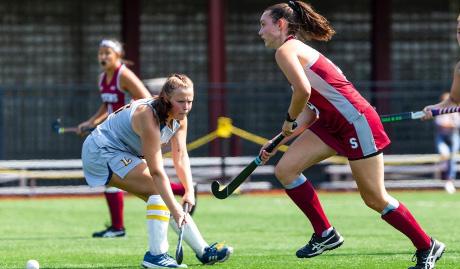 BY RUTHIE MULLISKY, SPORTS WRITER
BY RUTHIE MULLISKY, SPORTS WRITER
With the start of a new semester marks the start of fall sports. Stevens Field Hockey has started off successfully, with a 3-0 overall record and impressively only allowing two goals in three games, making this the program’s best defensive start to the season since 2008. Most recently, the team has defeated Moravian University with a score of 2-1 and No.18 ranked University of Rochester with a score of 2-1, after two rounds of overtime and a penalty shootout.
On September 4, the team won against Moravian at DeBaun Athletic Complex, marking the second victory against Moravian in only three games
the teams have played each other. In the first three minutes of the first quarter, junior Makenna Quigley managed to get a penalty corner against Moravian, and she recorded a shot on goal that was ultimately blocked by Moravian’s goalkeeper. However, Quigley kept this offensive momentum going in the second quarter, and she scored the first goal of the game, assisted by junior Sarah Korczukowski. This marks Quigley’s second goal of the season and eighth goal of her career. Moravian added their first goal just five minutes into the third quarter, tying the game at 1-1 for the rest of the third quarter. Yet, in only two minutes into the fourth quarter, junior Emily Smart added the game-winning goal for the
Ducks, also assisted by Korczukowski. This marked Smart’s first goal of the season and 16th of her career, and Korczukowski’s second and third assists of the season and seventh of her career. While the Ducks were very successful on the offensive end, it is also worth noting that sophomore goalkeeper Lily Wierzbicki made an impressive seven saves while in goal.
On September 9, the Ducks traveled to Fauver Stadium to play the No.18 ranked University of Rochester. It was a hardfought battle that ended in victory after two rounds of overtime and a penalty shootout. After a scoreless first half, the first team to score was Rochester in the third quarter. This goal remained unanswered by the
Women’s Volleyball starts their season
senior Meg Dion is recognized by MAC
 BY KAI WONG, SPORTS WRITER
BY KAI WONG, SPORTS WRITER
Stevens’ Women’s Volleyball’s 2023 season started strong on the first day of classes on Friday, September 1, when the team participated in the Stevens Invitational. Playing Union College and Catholic University, Stevens ended the day having won their matches 3-0 and 3-1 respectively. The next day, Saturday, September 2, the team faced off against Defiance College and ensured their first place victory, finishing the game off with a score of 3-0 and the tournament having won all three sets. Totaling 114 kills, six aces and 31 blocks, senior Meg Dion, junior Cleo Shannon, senior Elle Maggio, senior Liz Patterson, and junior Parker Adkins made notable marks on the team’s success. In particular, Shannon led the team during their second game on Friday against Catholic University with 20 kills and five blocks.
Meg Dion’s impact on the team throughout the tournament did not go unnoticed, as she was recognized not only by Stevens, but also by the Middle Atlantic Conference (MAC).
On Monday, September 4, Dion was recognized as the MAC’s Freedom Defensive Player of the Week. Throughout the tournament, Dion contributed 15 blocks and in the Ducks’ just three sets against Defiance on Saturday, she had eight kills and six aces. Additionally, Dion was one of two players at the invitational to hit double digits on opening weekend, which she accomplished in less than two sets.
The next week, the team competed in the Gargoyle Classic, hosted by the University of Chicago. On Friday, September 8, the team took losses to both Colby College and North Park University. In their first game, the Ducks went 0-3 against Colby. In the second, they started off strong, taking the victory in the first two sets against North Park, but were eventually defeated 2-3. Shannon managed 21 kills throughout the day, and Patterson totaled 15 kills and 42 digs.
On the final day of the tournament, Saturday, September 9, the team played the University of Chicago. The Ducks started strong, claiming the first two sets 25-23 and 25-19 but losing the third 14-25. The fourth set

3-0,
saw the Ducks’ victory, 25-20, securing their comeback following the two previous losses the day before, with a 3-1 victory over the University of Chicago. Saturday saw Shannon with 13 kills, two digs and two blocks throughout the game and Dion contributing another 10 kills and six blocks.
Stevens’ Women’s Volleyball now holds a 4-2 record for the 2023 season. Their next game will be in Doylestown, Pennsylvania against Delaware Valley University on Wednesday, September 20.
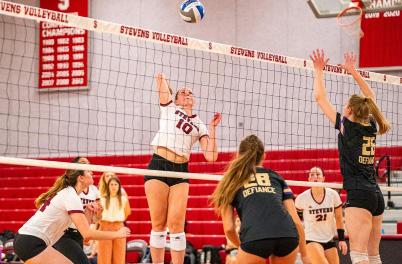
Ducks until the fourth quarter. With only three minutes left in the game, graduate student Lynda Farinella scored on a penalty stroke, tying the score at 1-1 and forcing overtime. This goal marks Farinella’s second goal of the season and 17th of her career. Neither team was able to score in the first or second round of overtime, forcing the game to go to a penalty shootout, where the Ducks would find the win. On the defensive end, first-year goalkeeper Maria Dante made 17 saves to ensure the win for the Ducks. This win marks the first win over a ranked team since 2013.
Following an impressive start to the season, the Ducks will face No. 3 ranked Rowan University on September 13.
STEVENS SCOREBOARD
Swat Invite–Day 1 Swathmore, PA 4 p.m.
SAT, SEPT 16
Cougar Classic Meet Dallas, PA 10:30 a.m.
FIELD HOCKEY
WOMEN’S AND MEN’S CROSS COUNTRY Swarthmore College Hoboken, NJ 12 p.m.
WOMEN’S SOCCER
WOMEN’S TENNIS U niversity of Scranton Hoboken, NJ 3 p.m.
WOMEN’S TENNIS
Swat Invite–Day 2 Swathmore, PA 10 a.m.
The College of New Jersey Hoboken, NJ 6 p.m.
MON, SEPT 18
MEN’S GOLF
FDU Fall Invitational Mendham, NJ Time TBA
MEN’S SOCCER New York University Hoboken, NJ 7 p.m.
TUES, SEPT 19 WED, SEPT 20
FIELD HOCKEY
MEN’S SOCCER Drew Univeristy Madison, NJ 4 p.m.
WOMEN’S SOCCER
The College of New Jersey Ewing, NJ 7 p.m.
WOMEN’S VOLLEYBALL
Delaware Valley University Doylestown, PA 7 p.m.
“Alexa, let’s discuss”: Stevens SocialBot makes Amazon’s Top 5
BY TIANNA SPITZ, OPINION COLUMNISTCan AI become a man’s best friend? A team of Stevens graduate and Ph.D. students competing to redefine chatbot technology says yes. The annual Alexa Prize SocialBot Grand Challenge (SGC5) places university computer science teams in an arena of multifunctional user-based chatbots that rival Amazon’s Alexa. The stakes? Tech publicity from the Amazon supergiant and a $1 million research grant. Under the rigor of competition and the push for innovation, the Stevens team rose to the top five finalists in the global competition held in early August.
With the phrase, “Alexa, let’s discuss,” Amazon users can access the Stevens bot, coined NAM—an abbreviation of Never Alone with Me—through the disembodied voice of Amazon Alexa products. Faculty Advisor, Professor Jia Xu, alongside first-year Stevens masters students João Luís Lins Rodrigues Cruz, Sai Nikhil Reddy Maligireddy, Abhijeet Gusain, and Yeshwanth Reddy Peddamallu developed NAM from a friendly inspiration to the final rounds as the Stevens bot measured up against Amazon guidelines.
In 2016 Amazon launched the Alexa Prize Competition to improve natural language learning in AI, typically developed by exposing the system to source information and then assigning the newly acquired pool of “empty” information common meaning by applying parameters, or a set of specific conditions used to establish recognition. This process, known as neural response generation, offers the exigence of ChatGPT as well as a semblance of machine-learned humanity in which Stevens’ NAM is Alexa’s virtual assistant protégé.
The SGC5 applies criteria for overall social delivery and scientific innovation, in which NAM gains its edge through an emphasis on empathy and connection to enhance the user-chatbot experience. NAM models active listening through large language models, a form of machine learning that statistically predicts a series of words
The last “Super Blue Moon” until 2037
BY TANYA AVADIA, BUSINESS MANAGERto generate natural language, in order to target open dialogue as opposed to strictly task-oriented responses.
In previous rounds, the team bots were eliminated based on customer reviews, live feedback, and the scientific merit of technical research papers published by each team. NAM advanced to the final judge evaluations as the bot was tasked with holding a meaningful, engaging conversation for at least two thirds of a 20 minute period while earning a composite rating 4.0 on a 5.0 scale to win the final prize.
How did NAM perform? The Stevens bot exceeded competition standards as users ranked the bot in the top 3 for standalone conversation time, double that of other teams. Xu said in a Stevens Research and Innovation article, “On average, our bot’s conversation time doubles other bots’ time. For some users, our bot reaches 56 minutes of chat duration, compared to about 10 to 20 minutes typically.”
In addition to prolonged conversational stamina, NAM’s original inspiration to provide friendship and support is embedded within its language model. NAM takes open dialogue one step further by asking follow-up questions to clarify and or strengthen its conversation with the user. Once the user activates NAM, the bot becomes an active player in the course of the conversation as NAM listens, clarifies, and validates with training to provide explanations after offering suggestions. w
NAM’s demonstration of user adaptability in chatbots of the future is just the beginning as Xu says, “Most of our team members at this point are fresh students without prior natural language processing backgrounds, and they became chatbot experts through the competition.”
NAM’s success speaks to the drive of Xu’s team as the Stevens bot makes strides in open dialogue systems, language models, and the user relationship with technology to steer the next chapter of AI.
“We realized our unique social bot based on imagination, innovation, and technology, and we are happy to be in the final.”
One of the benefits of the Stevens campus is the majestic views of New York City, the Hudson River, and of course, the sky. Many of you have probably noticed while looking at the night sky between August 30 and August 31 that the moon appeared larger and closer to the earth than usual. This phenomenon is known as a supermoon. However, what makes this specific super moon even more special is that it was also a blue moon. This is a big deal as August 31, 2023 marked the last blue super moon to occur until 2037.
What is a supermoon?
The orbit of the moon around our planet is elliptical. This means that at one point during the moon’s 29.5 day orbit, Earth is closest to the moon (called perigee) and at another point it is the furthest (called apogee). When the moon is both full and at the point closest to Earth is when a supermoon occurs. During this time, the moon will appear closer and shine even more brightly than during other full moons.
What is a blue moon?
The term blue moon doesn’t actually refer to the moon appearing blue. Instead, it represents the second full moon that happens within the same month. Since the moon’s orbit cycle is 29.5 days, chances are that if the first full moon occurred on the 1st or 2nd
of the month, that there will be another full moon, a blue moon, on the 30th or the 31st of that same month. This however, is a very rare event as it happens every two to three years. The rare occurrence of a blue moon also coined the phrase “once in a blue moon” as it refers to something happening once in a long while.
What is a super blue moon?
Super moons on their own happen fairly often as they occur three to four times a year. In fact, 25% of all full moons are super moons. On the other hand, only 3% of all full moons are blue moons. Given these likely hoods, seeing a super blue moon is an extremely rare sight. In terms of viewing a super blue moon, the moon will not appear blue but it will appear slightly brighter and slightly larger. The proximity to Earth during
a super blue moon will grow 14% or roughly 33,000 miles. This massive change is hard to notice through the naked eye as the shift for us is the difference between a nickel and a quarter as displayed by NASA through the image.
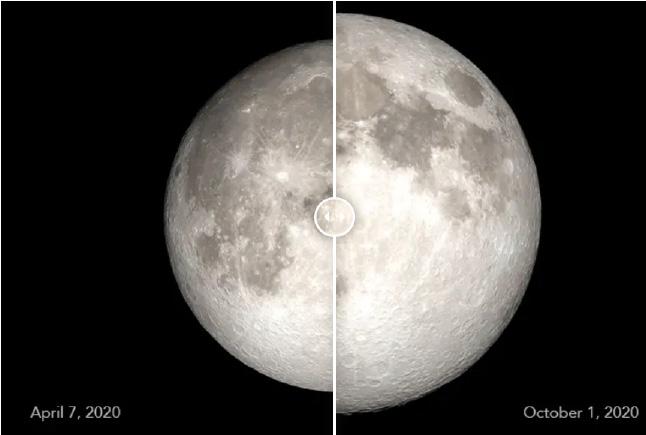
When will the next super blue moon happen?
If you didn’t get a chance to view the moon on August 30, 2023 you will have to wait 14 years before the next. While the next supermoon is predicted to happen on September 18, 2024, the next super blue moon will not occur till at least 2037. If you didn’t get to see the super blue moon this year, you can see it in 2037 and if you did get a chance to see the super blue moon from Stevens, you can reminisce about your college years if you see it again 14 years from now.
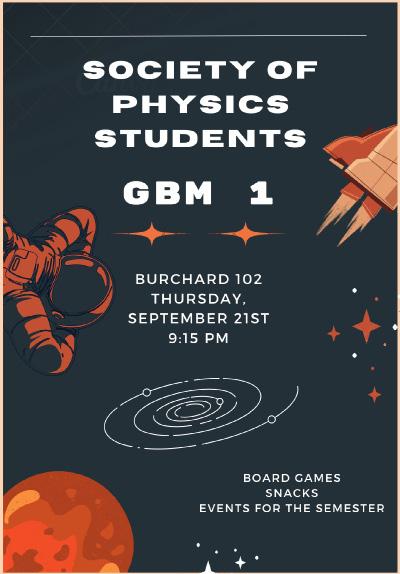
NIH to begin studies that may lead to COVID ‘brain fog’ cure
BY RIYANA PHADKE, CONTRIBUTORThe National Institute of Health (NIH) is beginning a series of studies to test possible treatments for ‘brain fog,’ a commonly misunderstood condition of long COVID that affects millions of people.
Brain fog has gained popularity among scientists over the past several months as a term used to describe the loss of attention, memory, mental sharpness, and concentration. Brain fog does not just affect patients who are sick enough to be admitted to a hospital — it can affect anyone who has been infected with the coronavirus. According to a JAMA Network Open Study, nearly half of COVID patients report having poor memory or brain fog, a substantial number when looking at the global impact of the pandemic.
Long COVID, also known as long-haul COVID, is what some people experience within a few months of a COVID-19 diagnosis. Symptoms may be the same or different from symptoms of COVID-19, and sometimes symptoms can reflect those of other diseases, such as chronic fatigue syndrome. Long COVID can also trigger health conditions such as diabetes and kidney disease. Across the United States, over 10,000 people suffer from long
COVID and its symptoms.
On July 31, the NIH announced a 1.15 billion dollar RECOVER project, which aims to test and find treatments for patients who have struggled for months with brain fog and similar cognitive symptoms.
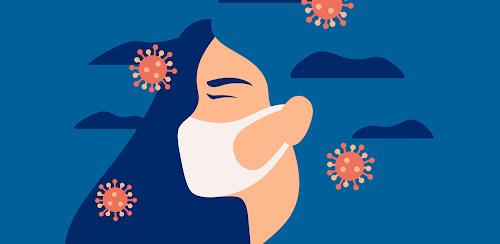
“This is a year or two later and smaller in scope than one would hope but nevertheless it’s a step in the right direction,” explains Dr. Ziyad Al-Aly of Washington University in St. Louis. Dr. Al-Aly is not involved with the NIH’s project, but has done research highlighting long COVID’s impact on the population.
So far, the RECOVER program has observed 24,000 patients to help determine the most common and pertinent symptoms. These findings will soon be used in a multi-faceted treatment trial that will look at two items; whether taking a Pfizer antiviral drug Paxlovid for 24 days could ease long COVID and treatments for brain fog and other cognitive problems.
In the coming months, two additional COVID-related studies will open – one will test for sleep problems while the other will target problems with the autonomic nervous system. Additionally, a study on the exercise intolerance and fatigue of patients with long COVID is planned, however, this study is controversial as it indicates that exercise may do more
harm than good for certain long COVID cases.
Each NIH trial is enrolling 300 to 900 adult participants but has the potential to expand. Unlike many typical studies that test one treatment at a time, these trials are considered flexible “platform studies” that will allow the National Institute of Health to add potential treatments on a rolling basis.
“We can rapidly pivot,” Dr. Amy Patterson with the NIH explained. A failing treatment can be dropped without ending the entire trial and “if something promising comes on the horizon, we can plug it in.”
While testing continues to advance, doctors urge patients with brain fog and other long COVID symptoms to proper care. The American Medical Association (AMA) suggests that people with brain fog should aim to lead lifestyles centered around healthy eating and sleep cycles, while also pursuing opportunities that reduce stress levels and support emotional health. “It’s important to know that a lot of people are experiencing these symptoms,” said Dr. Sousa, a pulmonologist and critical care physician at Atlantic Medical Group. “Sometimes people find it either hard to come forward and see their doctor or talk to people, but it’s really important that people try to work on recovery and getting better.”
THE STUTE EDITORIAL
Beyond the racks
For those of you who have never been a part of The Stute’s production, you may not know how much goes into each issue we release. From brainstorming ideas to writing, copy editing, designing layouts, and finally publishing, we experience a weekly cycle of effort, late nights, and countless revisions. But when the paper is printed, then distributed, and the stories gradually fade into digital archives on our website, one might wonder: What are we doing this for? Would anyone even notice if the racks were empty for a week? Some might. I certainly would, and so would every staff member who devoted their time to this newspaper. To a small group of students, The Stute means the world. While we aim to preserve Stevens’ history and amplify students’ voices; the truth is, this paper is for us.
Throughout my time at The Stute, I’ve seen multiple generations come and go. We’ve had
new and experienced writers from nearly every background, year, and major writing articles. We’ve had ambitious photographers submitting their pictures to be printed. And we’ve had dozens of dedicated individuals help push us towards success. In the process, we’re gaining skills while also forming our identities. By pushing ourselves to engage with different areas of campus life, our writers are discovering the issues they care about, columnists get to delve deep into topics they’re passionate about, and we all work hard to invest our time to make The Stute the best it can be. We challenge one another and ourselves to become better writers, editors, and leaders.
One of the most rewarding aspects of The Stute is seeing the physical manifestation of your work on the racks around campus. Not everyone gets the chance to have their writing published. I recognize that our
MIND OF A FRESHMAN ‘Twas the summer before college
earlier in the year. We’re a very accident-prone family as you’ve probably gathered.
BY NICOLE CHEUNG ‘27This summer was memorable, but not in the way of crazy graduation parties, trips with friends in Europe, or having a major glow-up. If I wanted to be negative, my summer was uneventful and consisted of checking my emails, helping my parents with the house, and playing Minecraft. But if I wanted to be a glass-half-full type of gal, I would say this summer has given me clarity. The time I’ve had has helped me distinguish the true significance of family, health, and happiness. My parents both had accidents with their hands in June/July. My dad currently has carpal tunnel in both hands and was preparing for surgery at the time. But the icing on the cake was having his finger severed by a manhole on the job. Then my mom realized she had sprained her wrist via a fall
I took on most family responsibilities and suddenly became the chauffeur, cook, dishwasher, floor cleaner, and laundromat. Even though I didn’t want to admit it, this put a strain on my mental health. I felt a lot of guilt for not wanting to take care of my parents, wanting to go out with my friends instead of driving them to doctor appointments, and that I had been taking them for granted before their injuries.
Though this seemingly repetitive time, the precious moments with family overshadowed our string of unfortunate luck, and proved more valuable than any banger party.
This summer we frequented one of me and my mom’s favorite places. We love going to a farm to pick vegetables ourselves. The almost hour drive to this farm in the middle of nowhere and coming home with pounds of eggplant and zucchini define summers at home. The experience of having zucchini for breakfast, lunch, and dinner, racing the clock before it rots in the fridge is an experience only we share. I love cooking, and every day I had the opportunity to cook
student-run school newspaper may not change the world, or let alone Stevens. Yet, we are evolving and improving ourselves through our dedication, and it’s rewarding for us and our community. The multitude of people involved enables us to impact everyone in the process. We support writers, photographers, comic artists, and columnists with their unique interests. While we may not always be the first to cover a topic, we consistently provide a distinct perspective.
It’s important for all of us to acknowledge and for me to emphasize that The Stute serves a dual purpose. Undoubtedly, it serves as a vessel for preserving Stevens’ history, but it is also a platform for personal growth and self-discovery. Being a part of this organization benefits us more than we might admit, but I’ll admit it. While we aspire to make a positive impact, we have to recognize our limited
my parents a new meal, but most importantly pretend like I’m on Masterchef. They couldn’t protest so we tried many things that my family would never have made on their own volition.
This summer we’ve also had our very first “family game night,” at my insistence. I’ve always wanted us to spend more time as a family, but our hectic schedules were generous enough to allow us a late-night dinner at the table together. The groans I got when I insisted we play Monopoly eventually subsided as everyone’s annoyance turned to enjoyment. Even my unenthusiastic, video game addicted, older brother was down for a second round.
My point in all this is that even when things seem like they can’t get any worse, there’s enormous strength in being able to see magic in the monotonous, and laugh when times seem grim. This summer has given me time for reflection on how precious family is, and as I go into this new chapter solo, I will always remember where I came from. I finally feel on the other side: I’m missing my other half and will always be worrying about my parents, but they finally get to live their lives again and see me flourish on my own.
reach. Perhaps we’re not more important than the readers, but our work is undeniably more rewarding. So, when you see The Stute on campus, know that it’s more than just a newsprint. It’s a testament to personal growth, resilience, and the unwavering commitment to creating something meaningful. It’s a journey of self-discovery and empowerment. We’re nurturing writers, photographers, and thinkers and shaping future leaders and the future of campus culture. In the end, we leave a lasting mark on the individuals who contribute their time and talents to The Stute. As I look back on my time here so far, I can say with certainty that The Stute has not only shaped campus culture but also transformed me into a more confident, capable, and empowered individual. We’re not just a newspaper; we’re a community of storytellers and future leaders, and our impact extends far beyond the racks.
SENIORITIS
Beginning of the end
BY ETHAN KLESCHINSKY ‘24 BY JOSIE STRANO COMIC CORNER
Hi... wow, I am back for my last and final year at Stevens. If you don’t know me, I am Ethan, a 4/4 software engineer. Writing this makes me think back on the good, the bad, and even more of the bad from my years here. This place has aged me, that is for sure. My peers have compared my demeanor to that of a grumpy old man who just wants to retire. I get it, honestly, and it doesn’t even make me upset to hear people the same age as me compare my actions to their grandparents. As I enter the final year of my tenure here,
 Isabella Ziv ‘25 Editor-in-Chief
Isabella Ziv ‘25 Editor-in-Chief

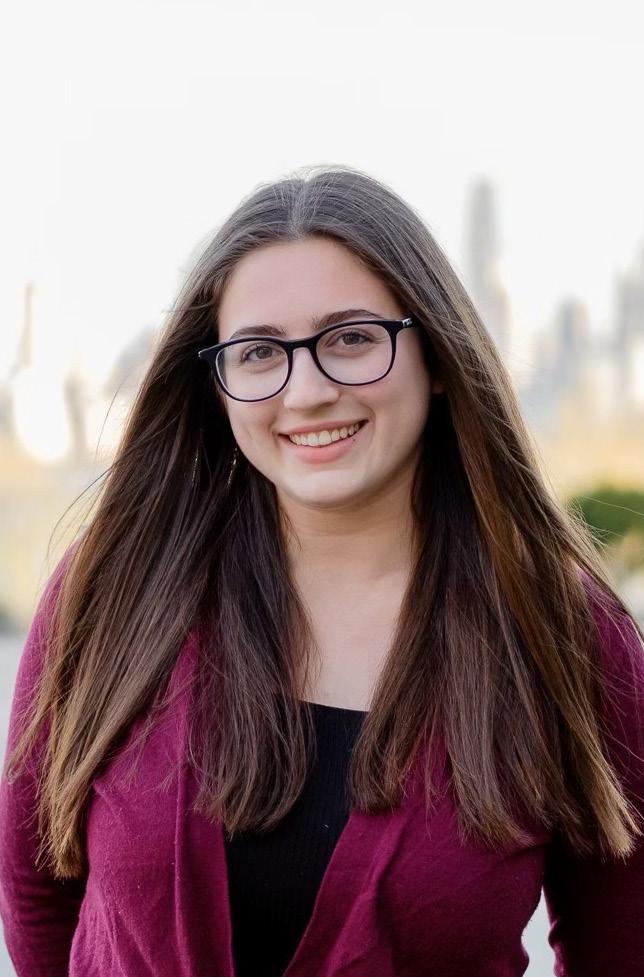
I am trying to make the most of my time while also planning for the future, and like an old man, I am sleepy. I wish I had more time to take naps, and more facilities on campus to take naps in, like resting pods. While I write this, I am fighting to stay awake because there is so much to do and no time to rest. I didn’t think that being a senior in college would be similar to being a senior citizen! Believe it or not, the similarities between the different types of seniors doesn’t end at our struggles to stay awake. With my old age and frail body comes a lot of wisdom over my years that I hope to have the opportunity to share with everyone. For example, a piece of advice from years of experience, it is okay to open up to new people and share your emotions. However, you should refrain from being so emotional that you end up crying on the Burchard bathroom floor. Another piece of advice, if you do end up
crying on the floor of the Burchard bathroom, prepare to never live it down and have it mentioned multiple times to new people, staff on campus, and in the student newspaper. I can vouch for the fact that Stevens is incredibly unique. Some have referred to it as “The Dusty Gem on The Hudson,” and I couldn’t agree more. This university has so much to offer in terms of student activities and communities to become a part of, so I encourage you all, whether this is your first or fourth year, to take advantage of those things. My philosophy about this whole college thing is to not look back on my time with regrets, but to remember my time fondly even with the struggles that may have arisen across the years. At the end of the day, I am excited to be back, be able to meet a bunch of new people, and spend time with familiar faces as I get ready to move on to the next part of my journey.
ISABELLA ZIVBOOK
Normal People: portrait of a 21st century Marxist
BY TIANNA SPITZ ‘26Karl Marx and Irish novelist Sally Rooney walk into a bar and discuss the terms of love and labor, perhaps how they’re one and the same. The 2018 novel Normal People, followed by Rooney’s Hulu adaptation, released in 2020, transcends time to reframe Marxist theory not only as modern counter-hegemony but as an interpersonal analysis of modern relationships. Rooney identifies as a self-proclaimed Marxist, and her framework is evident in the people she chooses to portray — they’re young college students who are placed precariously on the edge of social and economic class with no choice but to reach for each other over and over again.
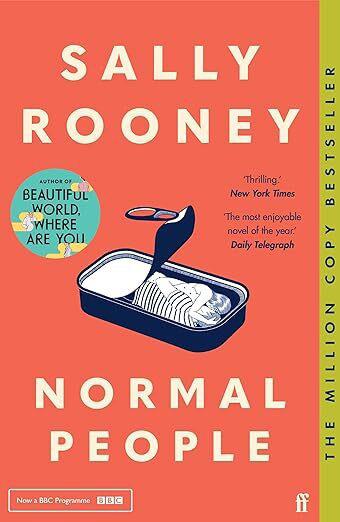
In Rooney’s second novel, through cutting prose, not to be confused with bleak, we meet two high school students in the small Irish town of Sligo who are inextricably bound. Marianne Sheridan is introduced as a social outcast who presents her intellect as a sharp knife to mark her reputation within the high walls of high school society. She embraces her isolation as a shield from the sense of being untouchable, yet our co-protagonist, Connell Waldron, is compelled to understand her from a distance. She’s wealthy, yet emotionally depraved, he’s popular, yet returns to a single mother who is employed by the Sheridans as a housemaid — a tale as old as time as boy-meets-girl but it is complicated by a capitalist reality. Connell finds solace through his intimacy with Marianne as they can shed their social
GIRL (ISH) TALK
and economic positions, as “he has the sensation that he and Marianne are like figure-skaters, improvising their discussions so adeptly and in such perfect synchronization that it surprises them both. She tosses herself gracefully into the air, and each time, without knowing how he’s going to do it, he catches her.”
As they stare at each other across from socioeconomic caverns, Rooney intertwines their narratives as she insists on an anti-capitalist need for mutual dependence that allows people to change people irrevocably. Parallel to socialist discourse and ideology, we know the concept of shared intimacy and change to be true.
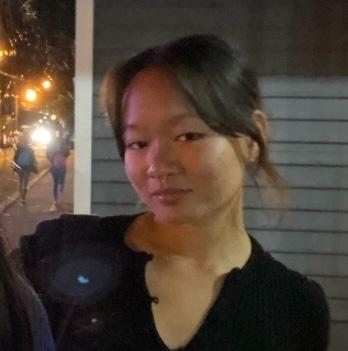
In reply, Rooney pushes us further to feel for Marianne and Connell as they dance around each other through adolescence and suffer the in-betweenness of a love confined by friendship but denying themselves the ownership of labels.
Rooney’s Marxist influ-
UNMASKING: AN AUTISM STORY
Diagnosis: The beginning of the journey of Autism
ence lies within a depiction of how we carry material and economic realities into our interpersonal relationships. Normal People underscores a very human curiosity of what happens in spite of capitalistic transactions and when we choose to give a piece of ourselves without the isolating walls of possession. In the end, we feel the protagonists’ motivations are not just their own, but the culmination of influence from one another that fuels a common interpersonal ownership. Connell and Mariannes’ relationship of seemingly fated depth with fallouts of equal gravity is a mesmerizing window into the socialist politics of love and maturation. But most importantly, Rooney’s narrative validates the errors and mishaps of our attempts at shared connection by recognizing that the miscommunication and debris of the aftermath, often rendering us in isolation, is in fact what makes us normal people after all.
BY EVAN PAPAGEORGE ‘26The definition of autism was the topic of this column last week: a necessary discussion to define what the future of these editions will explore. However, now that we’ve somewhat figured that out (at least as much as we need to for this column’s sake), we can dig deeper into unmasking the mysteries of autism.
The first step is also the first of someone with autism: a diagnosis. Although a professional diagnosis is not required and self-diagnosis can be adequate, this article will focus on professional and standard diagnoses. Different systems of diagnoses exist that all vary slightly but, for the most part, use the same series of observations and developmental milestone-tracking.
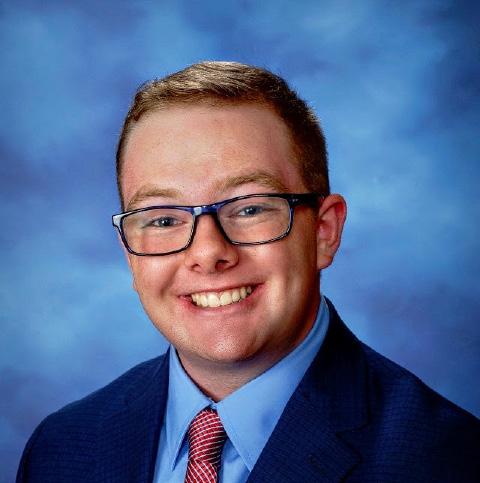
Autism is typically, at least currently, diagnosed during infant and toddler years. The primary catalyst for a diagnosis is observations during well-visits and parents/ guardians when a child is young. My parents and
OFF THE PRESS
What’s up with the (ish)?
BY CLAIRE HANNAN ‘24You might have noticed that the title of this column has changed slightly this year from Girl Talk to Girl(ish) Talk. First, before I explain the change, let me introduce myself. My name is Claire,I’m a Civil Engineering major in my fourth and final year here at Stevens, and I used to think that I could never write this column because I don’t consider myself to be particularly girly. There’s nothing wrong of course with being girly, it just never fit me. But my relationship with what it means to be a girl has changed a lot throughout my life, especially recently, which is why I decided to take on the chal-
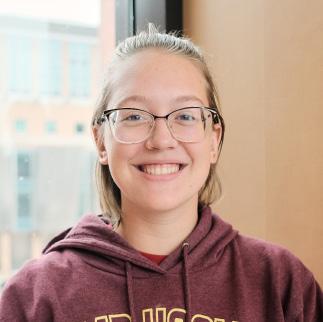
lenge of writing this column. When we were young, being a girl was quite black and white. Girls wanted to kiss boys, they loved dolls and bows, they talked and acted like other girls. It didn’t feel right because I just wasn’t able to do “girl” correctly. I didn’t think about it too much, there were way more important things to worry about, but that slight discomfort and shame lingered for a while. As we got older, me and my peers matured out of needing to conform. The people around me started being comfortable with individuality. I watched as “girl” changed year to year. Pretty soon, “girl” didn’t mean pink anymore. It meant that weird electric blue color that we all wanted to paint our rooms, it meant cutting our old shirts into crop tops. By the end of high school, “girl” had gone crazy, it could mean kissing other girls, chopping our hair off, it meant whatever you wanted it to.
I had grown up resenting the restrictions of being a girl, thinking that I couldn’t
be fully myself within it. Being into STEM added a whole other layer on top of everything. At my all-girl’s high school, I could count the number of kids into engineering on one hand. Screw all those ads about girls being astronauts and scientists, it’s hard to pursue your interests when your curriculum and teachers are actively discouraging you. With time and a little maturity though, I came to see how much freedom I really have under the umbrella of “girl.” I always had the freedom to be myself, I just needed the confidence.
So I’m girlish and this is Girl(ish) Talk because “girl” has become so expansive that I can’t say every girl and absolutely nobody else will relate to what I have to say about being female. All of this is just my own experience and observations but I hope someone finds it useful. Being anything resembling girlish in STEM can be tricky so it’s important to keep talking about it and have as many people in on the conversation as possible.
doctors realized I exhibited unusual behaviors like trouble hearing, yet my hearing seemed good, or not speaking with people. However, I talked to myself quite a lot. We went to a psychologist, and I was screened for autism when I was around 18 months old. The screening process is primarily observational, along with some tests and questions about behaviors. These include questions about social skills amongst peers, receptiveness to the world, repetitive behaviors, and others. The testing can consist of basic math (mostly counting due to frequently young ages), cognitive testing like shape and color puzzles, and sequencing (like taking turns).
After all the testing and interviews are complete, the doctor recommends whether a diagnosis is possible. Since there is no definitive test for autism, most doctors will recommend an autism diagnosis, sometimes to different degrees. For my diagnosis, the doctor told my parents I had a textbook case of Aspergers. Still, since a change in diagnosis standards, their suggested diagnosis was high-functioning autism (see the definitions article of this column for more information on the difference and other namings of what I am referring to as “autism”).
A critical topic of autism diagnoses is the age at which an individual is
The real reason why Pierce food is bland
BY OFF CENTEREver since the beginning of Pierce Dining Hall, people have been trying to discover the sole reason why the food served at Stevens is blander than a modern-day Disney Channel sitcom. Finally, after months of research, the true reason was discovered by Dr. Archie Ologist, who by looking at all the evidence, was able to create a story about what really happened.
Many years ago, at the beginning of the earth, there was a giant fight between two dinosaurs: a Tyrannosaurus Rex and a Pterodactyl. In the ensuing battle, something occurred that completely altered the course of history forever: The Tyrannosaurus Rex kicked a small rock. Now, the size of the rock combined with the force of the large dinosaur’s kick caused it to accelerate to such a velocity that it was able to travel in time all the way to 3000 C.E.
In that era, humans started living on the planet Gnortsmralien due to being able to live peacefully with the local aliens that lived there. A little alien boy named Ted was catching nearby stars with his net when all of a sudden, the rock flew into Ted’s net. Now, the energy of the stars combined with the mate -
looking for a diagnosis. As far as it is known, autism does not appear over time, which means that individuals cannot neurologically go from not having autism to having it; it can be problematic when older individuals beyond their toddler years seek a diagnosis. When screening older individuals, doctors typically rely on the memory of parents, guardians, and other caretakers from the individual’s childhood, asking the same questions asked for a toddler’s screening. Questions about an individual’s youth are also the procedure for progressive screenings, or when individuals previously diagnosed with autism are re-screened to assess if their condition has changed, specifically degraded, and require more services. This testing process happened to me several times throughout my grade school years.
One issue with screening for autism for an older individual is their ability to cope and work with their symptoms. Individuals with autism often rely on being able to “act” like individuals without autism. This process can make using an older individual’s current behavior unreliable for a diagnosis. This “acting” is a complex topic, often more personal than definitions and diagnosis standards. I will discuss this in the following article of this column: the masking process.
rial elements caused it to create a giant explosion, scaring the pants off of Ted, and causing him to land on a nearby cactus. Ted screamed so loudly in pain that it caused Gnortsmralien’s moon to crack, split up, and drift apart.
With the moon now in two pieces, everyone living there discovered ice cream located in the moon’s core. Everyone went to the moon to get a taste of the newly discovered ice cream.
However, a little human girl named Abigail got her spoon stuck in the ice cream. She pulled, and she pulled, but the spoon still got stuck. Finally, Abigail tied the spoon to a rocket with some rope to try to get it out, but the spoon was so stuck that the rope ended up breaking, and the rocket flew away, going so fast that it was able to travel in time all the way back to the 1870s. It traveled to a newly established town in Texas known as Rainstorm Valley. An infamous bandit known as Al Havalargefriesandacoke discovered the rocket. After a week of testing it out, he used it in his latest scheme: kidnapping the town’s mayor, Mayor Maynot. As the mayor was strutting in town, he was swooped into the sky by Al on his newly discovered rocket. While screaming for help, the mayor’s monocle fell
from the sky onto a horse. A nearby cat was curious about the monocle and jumped on the horse to look at it, accidentally scratching it in the process. This caused the horse to kick a lantern into a shed of dynamite. Luckily, a local cowgirl named Jazz Music noticed this and leaped onto the shed to blast her into the sky to save the mayor and stop Al. During the awards ceremony to congratulate Jazz, she started to feel a bit nervous and sweaty. She wiped the sweat off her face, but accidentally flung it all the way to a forest in France. In the forest lived sad elves who had bland food every day. However, the sweat fell onto a nearby rock, causing it to crack and the elves to discover a wonderful spice to flavor their meals, making the elves happy. This upset a local witch, who used the dwarves’ misery to create magic spells. Therefore, she created a magic powder to eradicate the spice forever and make the dwarves miserable again. However, the wind accidentally blew the magic powder away, causing it to travel around the world for several years before landing on the Pierce Dining Hall when it first opened. And that is why Pierce’s food is always bland.
ADVICE FOR BROKE COLLEGE STUDENTS
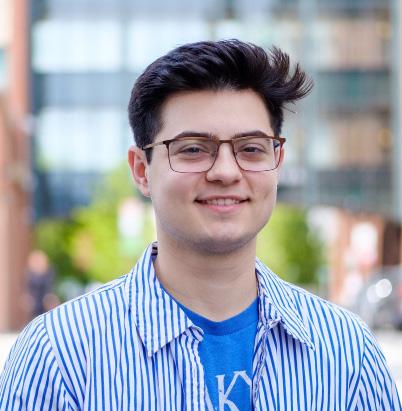
Pop culture makes you financially smarter?
BY HIMA THUMMALA ‘23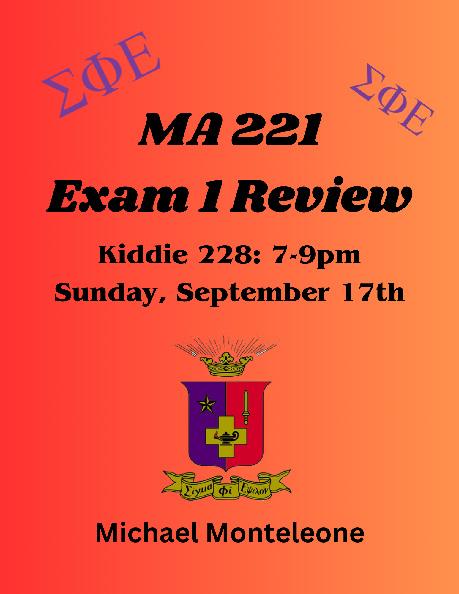

Pop culture has always been a part of our culture, and as the years progress, it is becoming a more prominent aspect of our
lives. This is largely due to its humorous, engaging, or inspiring qualities, as it keeps us always coming back for more. Many people tend to advocate about the benefits and disadvantages of pop culture, and most specifically it should be on the content that one is consuming. Sure one should watch movies for enjoyment, read a book to relax, or listen to music when stressed, but should also do these to learn. Learning everyday skills as an individual is an important part of being human, otherwise
how would we grow and help society progress? One of these important skills is being financially literate.
If it wasn’t for being educated in finance, many businesses and industries would not be even close to where they are today. Let’s take a look at the ABC’s show “Shark Tank”, a show where millionaires/billionaires will negotiate over different companies, which are commonly presented by their founder. The “Sharks”, aka the investors, will use their knowledge in finance to adequately
choose whether or not they want to make an offer for a potential investment. This investment can come in many, many different combinations, usually involving the amount of money and percentage of the company being requested by the Shark. How the Sharks obtained their financial knowledge, whether it was through their college degree, starting their own business, or reading books, is a part of what helped them arrive at being successful investors. This idea can also be ap -
Dosa-inspired savory oat pancakes
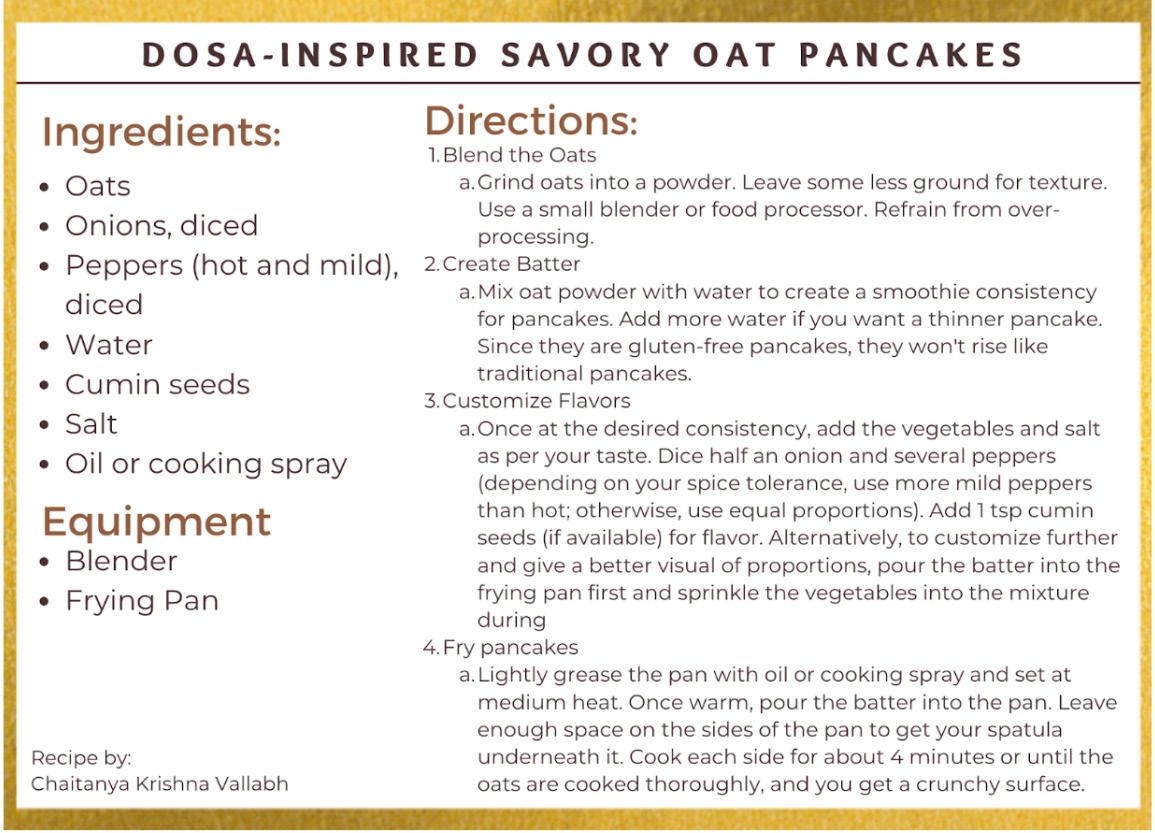
vory oat pancakes, which opened me up to a different avenue of breakfast flavor.
BY KAYDEN CANNILLA ‘24
Despite being told all my life that breakfast is the most important meal of the day, I struggle to prepare something for myself first thing in the morning. A great breakfast for me is quick and easy to prepare, light on the stomach, and packed with nutrients without tasting like a brick. I default to smoothies and yogurt parfaits, a sweet and creamy texture that I love, but it can get repetitive.
Over the summer, Professor Chaitanya Krishna Vallabh introduced me to these sa-
Professor Vallabh was inspired by the dosa he ate growing up, a prominent Southern Indian lentil crepe recipe. “Dosa preparation is not instantaneous – the batter must be prepared at least a day in advance for it to ferment,” he says, which is not very conducive to a dormitory kitchen. When he moved to the United States for university, Vallabh recalls that there were no restaurants that served dosa, so he began searching for instant recipes. This led him to the oats dosa, which, through many iterations became the oat pancake. The initial recipe turned out okay, but he collaborated with his university roommates to add his own twists to it, fine-tuning it to become a breakfast staple. It is filling, healthy, savory, and spicy, so try this recipe, make it your own, and enjoy!
plied to the entrepreneurs who have come on Shark Tank to pitch their ideas. Although many of these individuals have most likely not yet arrived at what they consider as their success, which is probably why they are looking for an investment, most of them have at least some sort of financial literacy that helped them turn their idea into a business. One of the best parts of gaining financial knowledge in this day and age is that it does not need to be a dreadful task if one is
not interested in the subject, since it can be made interesting. Take “Shark Tank” itself for example. The different ideas that entrepreneurs present are engaging to watch, and listening to how the Sharks negotiate not only can be entertaining, but very informative as well! After all, getting to watch negotiations made by some of the most famous investors can teach one a lot about how to be responsible with their money, no matter one’s financial status.
ROVING REPORTER
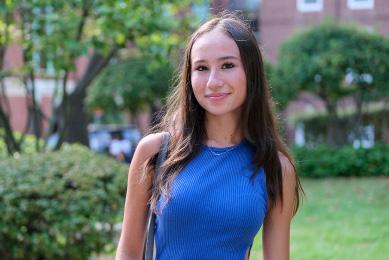
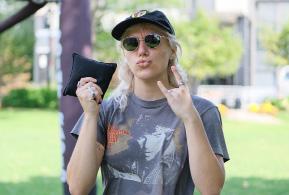
 By Rafael Lee Li and
By Rafael Lee Li and
ACROSS DOWN
Campus Pulse Sudoku
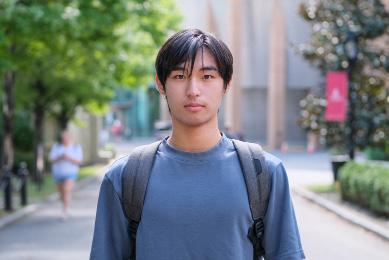
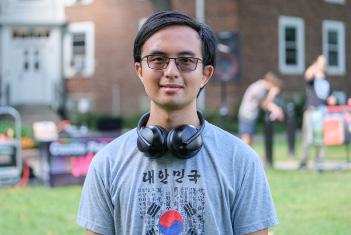
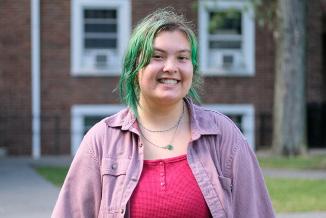

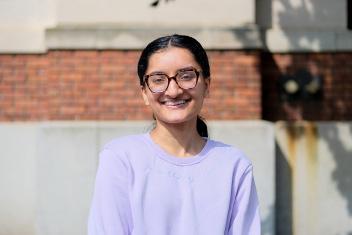
Crossword Hidden Links Only Connect “nouns”. “places”, etc. What do the following have in common? Dropquote
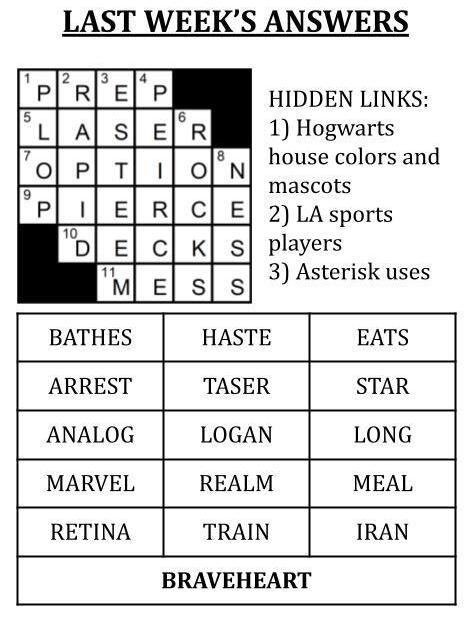

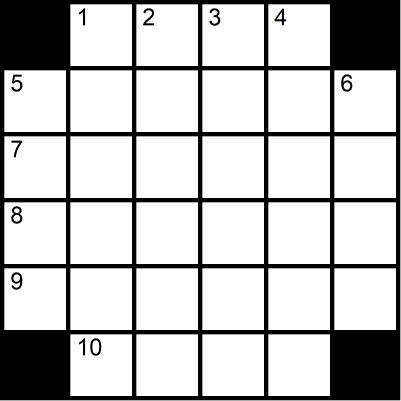
Hard Puzzle: 0.61 difficulty
Medium Puzzle: 0.59 difficulty


“What is one thing you wish we had on campus?”
Mia Petrolino
